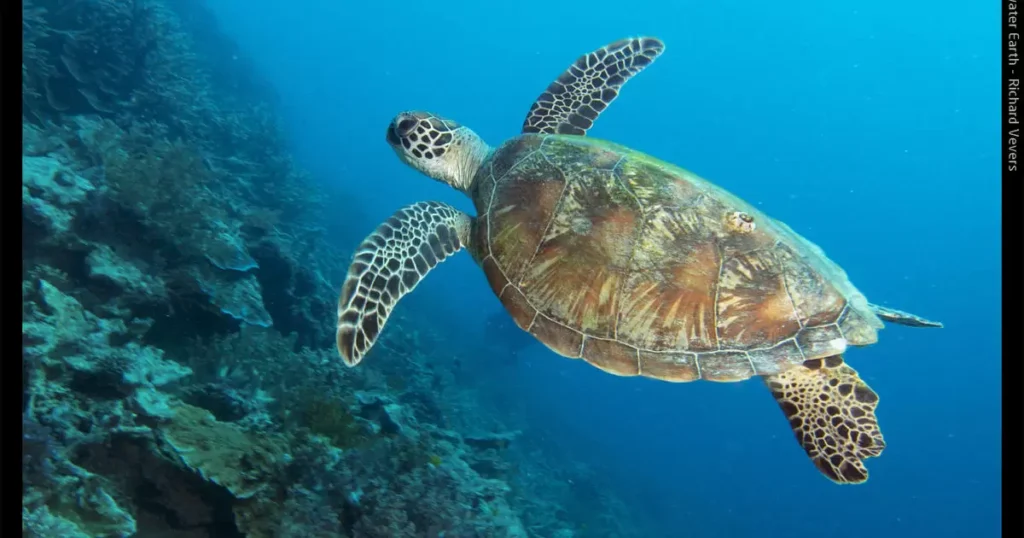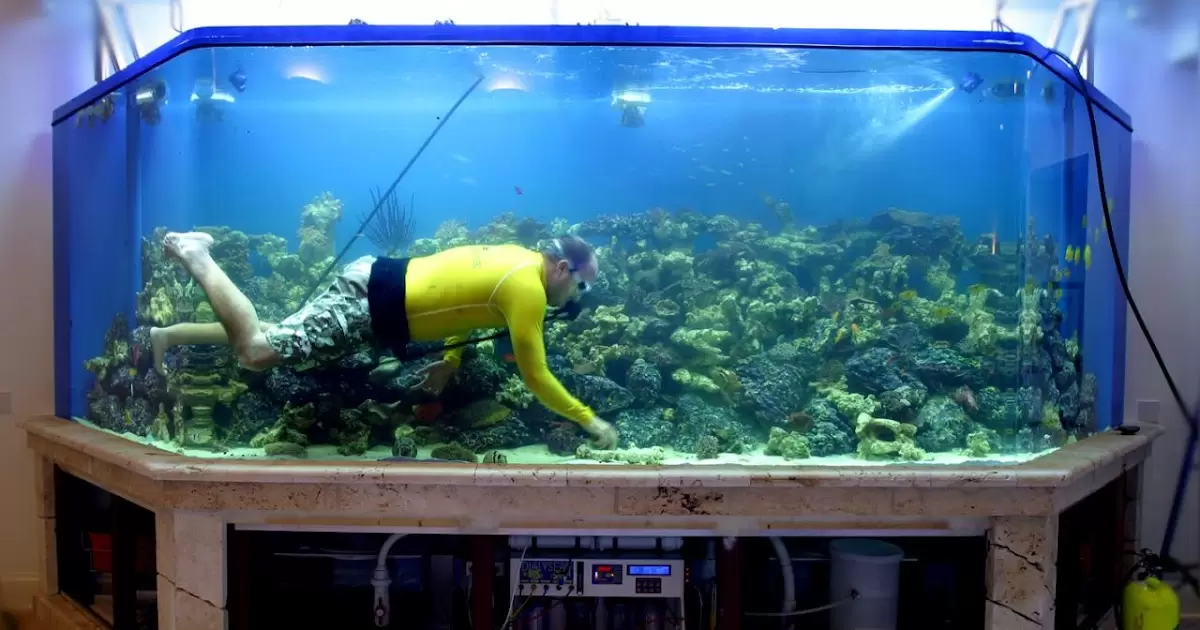Determining the right amount of water for a turtle tank is crucial for the health and well-being of your pet turtle. This involves considering the size and species of the turtle, as well as the dimensions of the tank.
Have you ever wondered, How Much Water Should Be In A Turtle Tank? This question is not just about filling up a tank; it’s about creating a habitat that mimics the natural environment of turtles. Getting this balance right is essential for their health and happiness.
The amount of water in a turtle tank affects many factors, including the quality of the water, the ability of the turtle to exercise, and the overall hygiene of the habitat. It’s not just about quantity; water quality plays a pivotal role, too.
Introduction: Creating the Ideal Aquatic Environment for Your Turtle
When setting up a habitat for your pet turtle, one of the most crucial elements is the amount of water in the tank. This isn’t just about filling a tank with water.
It’s about creating a balanced ecosystem that supports the health and well-being of your turtle. The right water level is key to mimicking a natural environment that allows turtles to thrive physically and mentally.
Choosing the right turtle tank
You can choose your tank once you know how much space you need for your setup.
The most important thing to remember is choosing a tank designed to hold water.
You need to ensure that your turtle has both a basking area and a swimming space. Therefore, if your turtle requires a 70-gallon water tank, you should choose a larger tank.
You need to provide your turtle with a basking area and swimming space. Therefore, if your turtle requires a 70-gallon water tank, you’ll need a larger tank.
Positioning your turtle tank
When you have acquired your turtle tank, you must determine the appropriate location to place it within your home. Keep in mind that the tank will be heavy due to the water volume, so it is important to choose a spot that can bear its weight. Ideally, this location should be on a ground-floor level space.
It is advisable to avoid placing your turtle tank close to a window. The reason is, the sunlight can raise the temperature inside the tank, making it difficult for your turtle to regulate its body temperature. Moreover, it can promote the growth of algae, which not only looks unpleasant but also adversely affects the quality of water in the tank.
Designing your turtle’s environment
Turtles require both a land and water area within their tank. As a general guideline, turtles need 10 gallons of water for each inch of their shell. It is also important to ensure that the water level is deep enough for your turtle to flip over without getting stuck. Ideally, the depth of the water should be 1.5 times the length of your turtle.
Different species spend different amounts of time in the water or basking, which directly affects the size of the platform and overall tank setup. For semi-aquatic turtles, the basking area should take up around 50% of the tank. For more aquatic turtles the basking area should take up around 25% of the tank.
Choosing a basking platform
A basking platform is an area where your turtle can dry off and absorb UVA and UVB rays. It is important to ensure that the platform is spacious enough for your turtle to easily turn around. A platform with a diameter of approximately 1.5 times the length of your turtle is usually a good size.
There are several options for basking platforms, including creating one from rocks and logs, purchasing a floating one, or constructing an above-tank platform.nk platform.
The most popular option in the UK for turtle owners is a floating platform that comes ready-made. This type of platform doesn’t take up much space, and your turtle can still swim below it. Just ensure that the water is deep enough, and there are no obstructions that could cause them to get stuck.
A popular method that many turtle owners are adopting is to have a basking platform above the tank. This provides more swimming space for your turtle. However, it is important to ensure that the basking area is easy to disconnect so that you can easily conduct water changes and clean the turtle’s tank.
It’s important to provide your turtle with a ramp to easily get in and out of the water, regardless of the type of basking area you choose.
Creating the right water and basking area conditions
Turtles are ectothermic, which means they depend on their surroundings to regulate their body temperature. The quality and hygiene of their surroundings have a direct impact on their health. As a result, it’s critical to ensure that the water and basking areas are arranged correctly for your turtle.
Maintaining proper water conditions and appropriate lighting may seem overwhelming, but it’s crucial for the health of your aquatic pets.
To simplify, we’ll first look at the water and then the basking area.
Water temperature and conditions
Turtles are big waste producers and messy eaters, so you need a strong filter. A popular choice is an external filter as they tend to be 2–3 times bigger than internal ones. It’s also a good idea to select a filter with a bigger capacity than water volume you have in your tank.
To maintain a constant temperature of water in your turtle tank, it is advisable to use an aquarium heater. To ensure the heater is functioning correctly, it is essential to get a thermometer, which will help you monitor the temperature. Place the thermometer on the opposite side of the tank’s heater to avoid an incorrect temperature reading.
Understanding Your Turtle’s Needs
Different turtle species have varying needs when it comes to their aquatic environment. Aquatic turtles, such as the Red-Eared Slider, require a tank mostly filled with water, while semi-aquatic turtles need a habitat that includes both a substantial water area and a dry basking space.
The water depth, quality, and temperature all play significant roles in the overall health of your turtle. A well-maintained turtle tank is not just a home for your pet; it’s a complex habitat that mirrors the dynamic ecosystems found in nature.
The Impact of Water on Turtle Health

Water in a turtle tank does more than just provide a swimming area. It’s integral for various aspects of turtle health including their skin, shell condition, and ability to carry out natural behaviors like diving and foraging. Inadequate water levels can lead to health issues like shell deformities and poor hygiene.
On the other hand, too much water can pose a risk for smaller or less experienced swimmers. Balancing these factors is essential for creating a safe and nurturing environment for your turtle.
As we delve deeper into the specifics of setting up the perfect turtle tank, keep in mind that each choice you make, from the water volume to its cleanliness, significantly impacts your turtle’s quality of life. The goal is to create a space that not only sustains but enhances their well-being.
The Significance of the Query
When asking, How Much Water Should Be In A Turtle Tank? We’re delving into a crucial aspect of turtle care. This query is not just about a numerical value; it embodies the understanding of a turtle’s natural habitat and its replication in a controlled environment.
Different turtle species mimic various natural water bodies, from rivers and lakes to ponds and marshes. By understanding the native habitats of these species, we can better mimic these conditions in captivity.
Species-Specific Water Requirements
The amount of water a turtle tank should have varies depending on the species. Aquatic turtles, for instance, require a tank predominantly filled with water, allowing ample space for swimming.
Conversely, semi-aquatic species need less water and more land area. The depth of the water is equally important. It should be at least 1.5 to 2 times the length of the turtle to ensure enough space for swimming and turning around comfortably.
| Turtle Species | Recommended Water Depth | Tank Size (Minimum) | Additional Notes |
| Red-Eared Slider | 1.5-2 times the turtle’s length | 40 gallons | Requires a large swimming area. |
| Painted Turtle | At least the turtle’s length | 30 gallons | Prefers shallower water with basking spots. |
| Map Turtle | 2 times the turtle’s length | 40-60 gallons | Needs both deep and shallow areas. |
| Box Turtle (semi-aquatic) | Shallow, around 4-6 inches deep | 30 gallons | Mostly land area with a small water section. |
| Snapping Turtle | 2-3 times the turtle’s length | 75 gallons | Large, deep water area required. |
Creating the Right Balance
Achieving the right balance of water in a turtle tank is about more than just filling it to a certain level. Several factors play into this:
- Tank Size and Shape: The tank’s dimensions determine how much water it can safely hold. A larger tank will naturally hold more water, providing more swimming space for the turtle.
- Filtration and Water Quality: Clean, well-filtered water is essential. Turtles can be messy, and a good filtration system is necessary to keep the water clean and free of harmful bacteria.
- Temperature and Lighting: Turtles require specific water temperatures, which can be maintained through heaters. UVB lighting is also crucial for their health, particularly for absorbing calcium and preventing metabolic bone disease.
- Safety and Accessibility: For younger or smaller turtles, ensuring they can easily access the water and dry land areas is vital to prevent drowning.
Health Implications
Incorrect water levels can lead to various health problems in turtles. Too little water can result in poor hygiene and shell issues, while too much water can be dangerous for less adept swimmers. Regular maintenance, including changing the water and cleaning the tank, is crucial to prevent diseases and ensure a healthy environment.
FAQs
Can the water depth vary as my turtle grows?
Yes, as your turtle grows, you should adjust the water depth accordingly to ensure it remains suitable for their size.
Is tap water safe for turtle tanks?
Tap water is generally safe, but using a water conditioner to remove chlorine and chloramines is advisable.
How do I know if the water temperature is right for my turtle?
Research your specific turtle species for its ideal water temperature. Generally, a range of 75-85°F (24-29°C) is suitable for most turtles.
What should I do if my turtle seems to struggle in the water?
Ensure the water is not too deep and that there is easy access to a basking area. If the problem persists, consult a veterinarian.
Conclusion
Creating the ideal habitat for your pet turtle means paying close attention to the water in their tank. The right amount of water is essential for their health and happiness, varying based on the species and size of your turtle.
Remember, it’s not just about the quantity of water but also its quality, temperature, and cleanliness. Regular maintenance and understanding your turtle’s needs are key to ensuring a thriving environment.
Every turtle owner’s journey involves learning and adapting to their pet’s needs. By focusing on the right water balance in your turtle tank, you provide a space where your turtle can swim, explore, and relax comfortably.
This care and attention contribute significantly to the well-being of your beloved pet, making your efforts truly rewarding. Remember, a happy turtle means a happy tank and, ultimately, a happy you.









